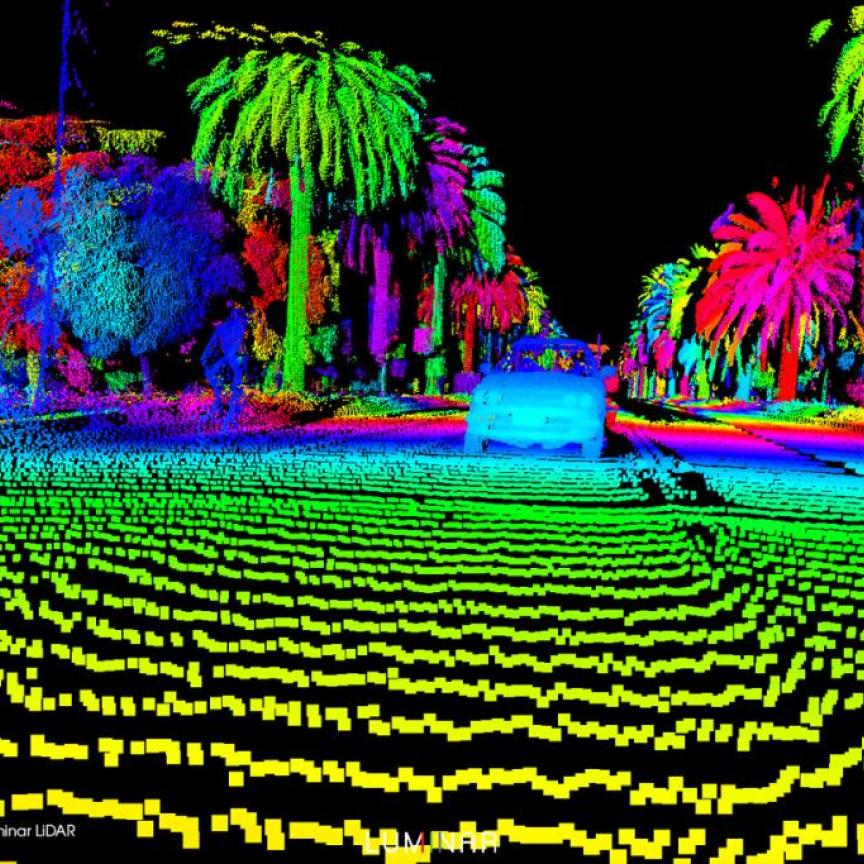Greg Blackman and Jessica Rowbury report from Laser World of Photonics, which was held in Munich, Germany from 22 to 25 June
More than 30,000 visitors attended Laser World of Photonics, the biennial photonics trade fair that took place in Munich, Germany from 22 to 25 June. Technologies ranged from complete laser systems to optical sensors and everything in between.
Additive manufacturing, automotive and biophotonics were all focus areas at the show. In the additive manufacturing sector, Fraunhofer Institute for Laser Technology ILT was demonstrating vehicle axle elements produced for racing cars by selective laser melting. The components were designed in a lattice structure to make them light weight, and could be made 30 per cent stiffer using the additive manufacturing process.
Ophir Photonics was exhibiting laser beam profiling equipment used in an additive manufacturing project. The project is aiming to develop laser sintering systems for use onboard submarines or on air bases to print spare parts on demand, rather than having to ship them from a manufacturing site. Ophir was providing profilers to analyse the beam used in the laser sintering machines.
Belgian company Materialise was showing its technology for printing anatomical models of the heart from medical image data. There was also a special start-up award for 3D printing, presented to Swiss company Femtoprint for its 3D production system for glass microdevices.
Both Ophir and synthetic diamond producer, Element Six, were seeing a drive towards higher power lasers for industrial processing, with the likes of IPG Photonics, Trumpf, JDSU, and Rofin exhibiting high power systems. Ophir was displaying its BeamWatch non-contact beam monitoring system for high power lasers, which has been used to measure powers up to 100kW, as well as a water-cooled energy sensor operating up to 6kW.
Element Six presented two papers at the conference on work fabricating moth-eye micro-patterns on diamond optical windows, which, according to the company, greatly enhances the laser induced damage threshold of the optics for multi-kilowatt lasers. Element Six expects this innovation to be a key enabler for extreme ultraviolet (EUV) lithography for semiconductor chip production, as these systems use high power CO2 lasers – laser system provider, Trumpf, is currently developing high power CO2 lasers for EUV steppers, a model of which was displayed at the show.
Car production
On Trumpf’s stand, a German mail service electric vehicle was displayed, with both elements of the van’s body and the battery produced with laser processing. Trumpf’s lasers were used to weld carbon fibre reinforced plastic components in the seat, as well as for joining dissimilar materials like copper and aluminium in the vehicle’s battery.
The BMW i8 with its laser headlight technology was the showpiece of the automotive application area at the trade fair. Various equipment, from Polytec’s metrology systems to production lasers from Rofin, were part of the display demonstrating the array of photonics technology used in the automotive industry.
International Year of Light
Laser World of Photonics fell mid-way through the International Year of Light and Light-based Technologies. ‘Photonics is fascinating and has truly become a game-changer in industry and society,’ Wolfgang Boch of the European Commission commented. Boch spoke on the topic of the International Year of Light during the opening ceremony of the trade fair and the World of Photonics Congress.
One of the main draws for visitors were lectures from Nobel Prize winners, including two of the recipients of the 2014 Nobel Prize in Chemistry, Professor Stefan Hell and Dr Eric Betzig, both speaking on the topic of super resolution microscopy. PicoQuant was demonstrating its stimulated emission depletion (STED) microscope, one of super resolution imaging techniques that won the Nobel Prize.
Biophotonics was a big area at the show, with Toptica displaying its laser diodes for spectroscopy and medical applications, as well as its DLC Pro digital laser controller for very precise control of tunable diode lasers. Quantel released its Elba fibre laser designed to address applications in ophthalmology, gene sequencing, and high resolution microscopy, while ProPhotonix was showing laser diodes for tasks including particle image velocimetry for testing drug delivery devices.
Excelitas was exhibiting a whole range of biophotonic technologies, including what it considers to be the smallest endoscope camera available, LED light sources for fluorescence imaging, and a dental scanner with a liquid lens that gives very rapid focusing for scanning the inside of patients’ mouths.
The Institute of Photonic Technology Jena (IPHT Jena) was presenting its latest product developments in medical technology as part of the biophotonics research focus group, consisting of representatives from the European Commission, UNESCO, and various other industrial organisations.
Some of the products on show included point-of-care and on-site diagnostic test systems that detect germs and bacteria in food using optically readable biochips, test kits or spectroscopic measurements that don’t need any sample preparation. Another system based on surface-enhanced Raman spectroscopy (SERS) makes it possible to detect illegal admixtures – such as azo dyes and melamine − in food and drink.
For medical applications, a portable, chip-based device which enables the simultaneous detection of up to 40 pathogenic micro-organisms was displayed. In just a few minutes, the device analyses the DNA of pathogens, allowing users to detect micro-organisms quickly on site.
Related articles:
- Nobel laureates draw crowds at Laser Munich
- Trumpf invests €70m in EUV facility and showcases tech at Laser Munich
- Industry 4.0 10 years away, photonics executives told at Laser World of Photonics
- 3D imaging microscope wins start-up award at Laser World of Photonics
- German companies missing out on Asian funding, report states
- EOS young photonics award winners announced
Further information:


